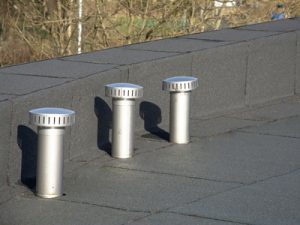proper insulation with a torch roof
Typically, a roofing professional will first apply a layer of insulation. This step is vital to the performance of any flat or low-slope roof. The next layer is a vapor barrier. This prevents moisture and condensation issues from developing. Torch on roofing is highly durable. However, it’s important to perform regular maintenance.
A roof’s insulation is a critical layer that keeps water from seeping into your building and its contents. It also protects against UV radiation and helps with energy efficiency. Blown-in insulation is easy for Bowie roofing contractors to install and can decrease your energy costs in the long run. The underlayment layer is another critical layer that prevents moisture from penetrating your insulation or decking layers. It creates a smooth surface that the final Torch Roofing layer can bind to.

The final layer is a cap sheet made of either a polyester mat or a granule layer. Roofing professionals will heat the underside of the cap sheet and press it against the base membrane to fuse them together. Depending on the style of torch down you choose, the cap sheet may enhance fire resistance, energy efficiency, or other distinctive characteristics. Whether your torch down system uses two or three layers, the cap sheet will be finished with a white silicon coating that further waterproofs your flat roof.
What steps do you take to ensure proper insulation with a torch roof?
Underlayment is a crucial element in any Barrie Roofing. It’s a water-resistant material that goes over the insulation boards and prevents moisture from penetrating your roof. Without it, your felt could become brittle or crack over time. Next, your Bowie contractor will lay down a vapor barrier. It helps mitigate condensation within your new roof and protects your investment by reducing energy bills.
Once the vapor barrier is in place, your Bowie roofing contractor will apply a base sheet with either a smooth or granulated surface. They will also use this layer to seal the edges of the roof and around features that penetrate it, such as HVAC units or chimneys. Most homeowners opt for a three-layer system, which provides better protection and lasts up to 20 years. A two-layer system is more affordable, but it won’t last as long.
A torch roof typically has a two- or three-layer structure. The choice of membrane is an important consideration. Two-layer systems cost less and offer reasonable protection, but they don’t last as long as a three-layer system. The first step is preparing the surface to lay down the insulation and underlayment. This includes removing any debris, such as leaves or branches, from the area of your roof. Next, you’ll need to clean the surface and make sure it’s free of moisture.
Depending on your needs, you can choose between fiberglass and foam board insulation. Both are great choices for insulating your home. They prevent moisture buildup, protect your home from air leaks and help reduce energy bills. Once your Bowie roofing contractor has prepared the surface, they’ll lay down an overlay board. This provides a surface that the bitumen will bond to. After that, they’ll apply the base sheet. Some contractors may choose to use a smooth base sheet, while others prefer the rubberized appearance of an SBS modified bitumen membrane.
Name : Barrie Roofing & Repair Contractors
Address: 279 Yonge St, Barrie, ON, L4N 7T9 P.O Box#23013
Phone: 705-999-7628